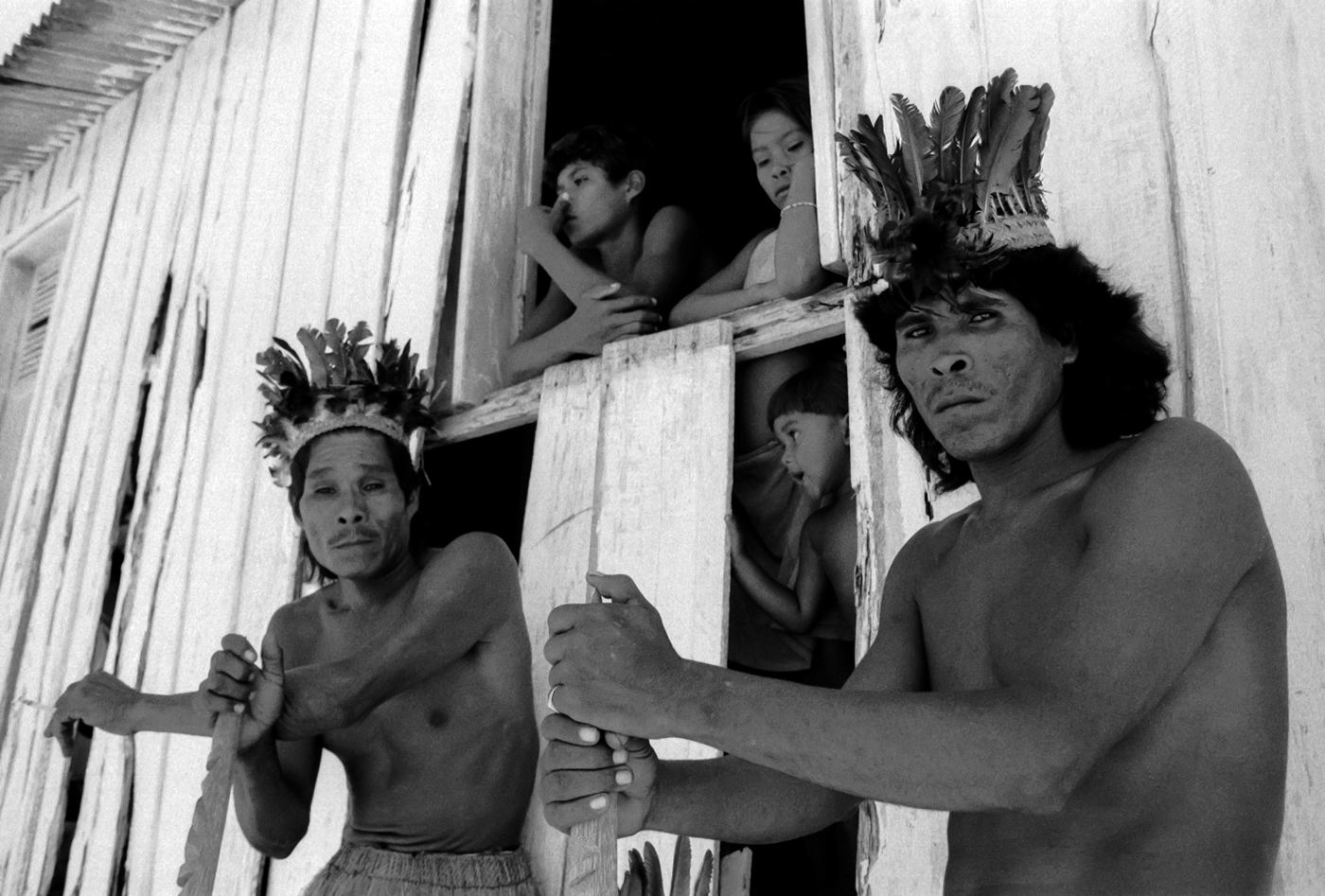Pataxó Ha-Ha-Hae
According to historical records, the Monte Pascoal, one of Pataxó indigenous reserve today, would be the first Brazilian territory sighted by Pedro Alvares Cabral and his crew on April 22, 1500, the date of the discovery of Brazil.
Since its discovery to the present, the history of the Pataxó people denotes numerous attempts of acculturation exercised by creating artificial villages where the natives have been transferred from different indigenous groups and where they had to learn to speak the Portuguese language (or language invented by the Jesuits on the basis of a Tupinambá vocabulary and Portuguese grammar), thus losing their original language, their way of life, their beliefs.
The need to return to themselves an ethnic authenticity brought Pataxo to reinvent their own language, the Patxohã (or the warrior Pataxó language). Subsequently they executed paintings on the body that did not use the beginning of the nineteenth century. In 2001, they held a seminar that has defined the body painting models and assigned a meaning for each of them.
This statement of identity or differentiation, signals to show (and see) themselves as a complete group, is part of a path of self-esteem addressed to its sustainability (both economic and cultural). However, the indigenous lands in Brazil belong to the Federal Government and not to the natives, which means that it is, theoretically, a nature conservation and biodiversity, not native. No private land, but common ground for all the Brazilian people.

Pataxó Ha-Ha-Hae are an ethnic group of Brazil with an estimated population of 2,375 people in 2010.

The Pataxo speak the Portuguese language. The original language of the Pataxó Hãhãhãe, belonging to the linguistic family maxakali, is no longer in use since the thirties of the twentieth century.

The Pataxó live in the Brazilian state of Bahia, in the Caramuru-Paraguaçu Indigenous Reserve, located within the municipalities of Itaju do Colônia, Camacã and Pau-Brasil, created in 1926.

These photos are part of a photographic and documentary project, realized between 1996 and 2001 in Brazil. The original project has been developed in two different moments that have resulted in the creation of four documentaries shoted in the states of Amazonas, Roraima, Bahia, Minas Gerais and Parana', in addition to a portfolio that represents the synthesis. The cultural stratification which over the centuries has affected the Brazilian continent is still being seen today with anthropological and social connotations. The aim of photographic project shown here, is to catch the signs in the culture and society of visited countries.


